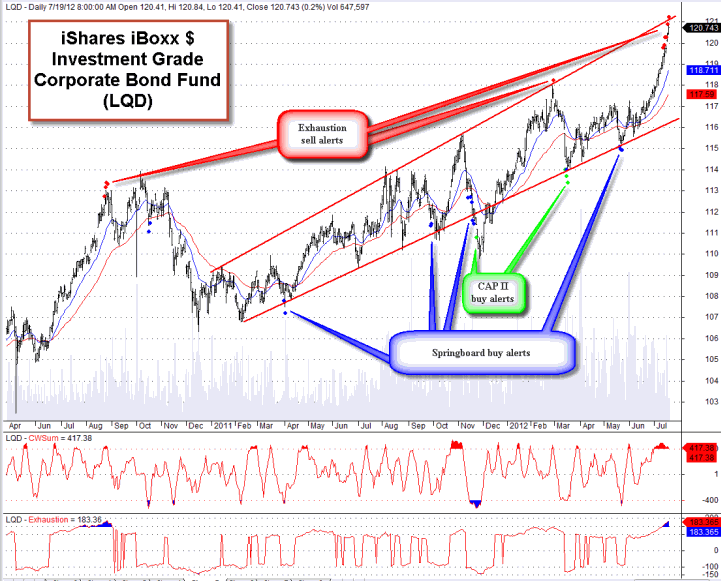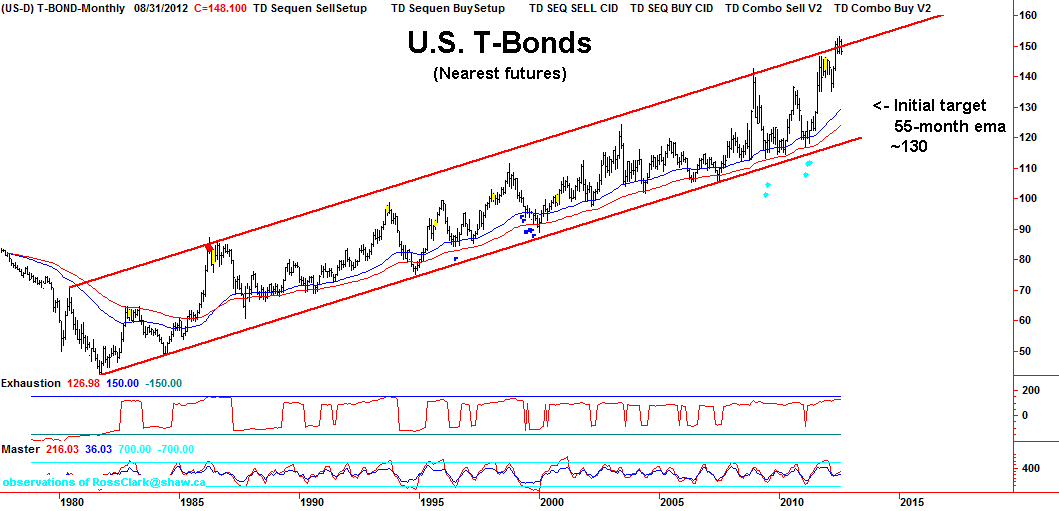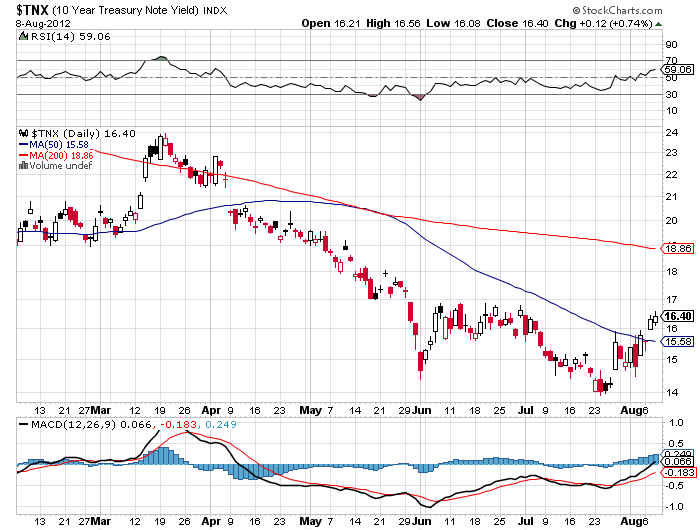Bonds & Interest Rates
We hear so often about the insidious gyrations of the three “FLATIONS.’
There is, of course, inflation which we have been inured by our leaders to tolerate – as a “good.” Then there is the feared and poorly understood notion of deflation.
Even the process of inflation is poorly understood. The Federal Reserve tells us they must target 2% to 4% price inflation. But that means that each year your income (particular currency) buys less so you must earn more to keep up with inflation. Lately, at least for the past decade or so, everyman’s earnings have not increased in pace with these targets or the actual rate of inflation.
The “D” word, deflation, is an enigma, misunderstood and seldom mentioned by our leaders. But it is feared much more than inflation.


![]()
You cannot expect to do well in the market if you look at investing in a normal way. By definition, being average is doing what most other people do and since investing is largely a psychological game, doing what other people do is only natural. Average results come from normal people acting in normal ways.
To beat the market, you have to be different.
Not necessarily in a straight jacket bouncing off padded walls different, just a little off.
Here are 10 things that may help you be a better investor, some ways to think differently from the crowd in that pursuit to achieve market dominance.
1. Do not think about making money, think about losing money – the first step toward success is accepting that losing is part of trading. You will not be right all of the time, you cannot always trade your way out of a bad situation. There will be times when you simply have to walk away with a loss. The key is to keeping the losses small and manageable. When the market proves you wrong, take the loss.
2. Do not think you can average down to win – it is a logical idea, add more to a losing position with the expectation that the market must eventually go your way. Many times this strategy will work but, when it does not work, the loss may be insurmountable. The market does not eventually have to go your way.
3. Do not think that your success is entitled – you may make a great trade, pick a really great stock and have a feeling like you really have the market figured out. Forget your gloating, no one ever has the market figured out. We must always remember that we have to work as smart for the next trade as we did for the last.
4. Do not think that talent is required – making money in any trading endeavor is a small part technical skill and a big part emotional management. Learn to limit losses, let winners run and be selective with what you trade. Emotional mastery is more important than stock picking skill.
5. Do not think that you can tell the market what to do – the market does not care about you, it does not know that you want to make a profit. You are the slave, the market is your master. Be obedient and do what the market tells you to.
6. Do not think you are competing against other traders – trading success comes to those who overcome themselves, it is you and your persistent desire to break trading rules that is the ultimate adversary. What others are doing is of little consequence, only you can react to the market and achieve your success.
7. Do not think that Fear and Greed can ever be positive – in life, fear can keep us from harm, greed can give us the motivation to work hard. In the market, these two emotional forces will lead to losses. If your decisions are governed by either or both you will most certainly find that your money escapes you.
8. Do not think you will remember everything you learn – every trade provides a lesson, some valuable education on what to do and what not to do. However, it is likely that your lessons will contradict one another and lead you to forget many of them. Write down the knowledge that you accumulate, return to this trading journal so that you can retain some value from the lessons taught by the market. Remember, the market is cruel, it gives the test first and the lesson after.
9. Do not think that being right will lead to profits – you may be exactly right about what the fundamentals are and what they are worth. However, timing is everything, if your expectations for the future are ill timed, you may find yourself losing more than you can tolerate. Remember, the market can be wrong longer than you can be liquid.
10. Do not think you can overcome the laws of probability – traders tend to be gamblers when they face a loss and risk averse when the have a potential for gain. They would rather lock in a sure profit and gamble against a probable loss even if the expected value of doing so is irrational. Trading is a probability game, each decision should be made on the basis of the best expected value and not what feels best
I am on vacation this week so there is no Market Minutes video. Back to normal next week.
![]()
- Get the Stockscore on any of over 20,000 North American stocks.
- Background on the theories used by Stockscores.
- Strategies that can help you find new opportunities.
- Scan the market using extensive filter criteria.
- Build a portfolio of stocks and view a slide show of their charts.
- See which sectors are leading the market, and their components.

Ross Clark studies Data, much of it going back centuries, in order to define the tendencies, patterns and cycles that reveal areas of risk and opportunity. For example, Ross told Michael Campbell about the “Sell Side” indicator.
Historically the Sell Side Indicator, which is the consensus of opinion of the analysts in New York of what percentage of an investors portfolio should be in equities, has ranged as low as 47% when everybody is quite negative to the high 60’s when everyone is extreme bullish as they were in 2001/2002 following the Internet Boom.
Remarkably right now the Sell Side Indicator is only 44%! So with the indicator at this unusually low level, Ross plotted the Sell Side indicator against the S&P and clearly found that over the next 6-12 months this combination has a phenomenal record of revealing big upside moves in the market. Not modest moves either, indeed they are typically in the 20-30% bracket. The disaster in Europe and troubles financially in the US has made analysts negative stocks at a time when history indicates powerfully that the market is about to rally.
But the big issue Ross wanted to make very clear is that the Bond Market is at an extreme. Like any market at an extreme, significant change is afoot. Yields are at historic lows, at the tail end of a long term decline in interest rates that began 32 years ago in 1980.
These are unnerving times, people are feeling very uncertain and in these times of risk aversion bonds go up (rates down). And down those rates have certainly gone with the 10 Year US T-Note hitting a tiny 1.4% yield recently. Rates have even gone negative in Germany. How long can this go on, or better yet are interest rates and bond prices not at an extreme?

Ross Clark: “Extremes occur every 3 1/2 – 4 years and this is right in the window where we are now. We have good overbought readings in everything from the sovereign items through to the corporate, the high yields, the emerging bonds, all of the sectors within the bond complex. I believe we are in need of a pretty sizeable correction, or down move in the pricing of bonds and an upmove in interest rates. This situation is the most significant factor in markets today. There has been such a flight to these items, particulariy in the last 6 months or so, and from a technical perspective its overdone and in need of corrections. You have a 10 Year US T-Note that bottomed at 1.4%, currently at 1.65% right now. Typically, looking at 50-60 years worth of data, you would rally those interest rates back the the 55 month moving average which would be a 2.%-2.6% yield on that 10 Year Note. To go from 1.4% to 2.6% is a huge, and that move would have a big impact on the price of bonds.“
Of course a rise in Bond rates will effect anything that is directly interest rate related from mortgages to bank loans.

CIBC Wood Gundy PO Box 49184
Suite 2434 – 1055 Dunsmuir St.
Vancouver BC V7X 1K8
(877) 331-5122 toll free
(604) 661-7700 fax
Email: RossClark [@] shaw.ca

Carla Pasternak’s Dividend Opportunitiess


Once again, here’s the yield on the bellwether ten year T-note. And darned if it didn’t gap up yesterday — it gapped clear out and above its 50-day MA. Is the market telling us that the bond boom is over? Has the bond bubble burst, and are interest rates heading UP? Quick, refinance your mortgage.
Wait, don’t laugh away this little gap up in the ten-year T-note. Up until recently, US Treasury debt has represented the world’s ultra-safest haven, the safest place on the planet to store your money. So could this little rally in the yield of the 10-year T-note mean that the world no longer believes US Treasuries are the number one safest place to store money?
Remember, last year S&P lowered the US’s credit rating from AAA to AA+, the first time in history that the rating on the sovereign debt of the US has been lowered. Now, we’re moving ever-closer to the “fiscal cliff” — when taxes will be raised and spending will be cut, thereby almost guaranteeing a severe recession. Will the politicians in Washington let it happen? Well, stranger things have occurred.
On June 8th, S&P issued its latest warning. There’s a one in three chance the S&P will cut the US’s rating again by 2014. Let me put it this way — S&P does not like the way things are shaping up. Time is growing short. And the yield on the 10-year T-note is rising. And that’s not just talk, it’s the market issuing an early warning.

Letters are published and mailed every three weeks. We offer a TRIAL (two consecutive up-to-date issues) for $1.00 (same price that was originally charged in 1958). Trials, please one time only. Mail your $1.00 check to: Dow Theory Letters, PO Box 1759, La Jolla, CA 92038 (annual cost of a subscription is $300, tax deductible if ordered through your business).
IMPORTANT: As an added plus for subscribers, the latest Primary Trend Index (PTI) figure for the day will be posted on our web site — posting will take place a few hours after the close of the market. Also included will be Russell’s comments and observations on the day’s action along with critical market data. Each subscriber will be issued a private user name and password for entrance to the members area of the website.
Investors Intelligence is the organization that monitors almost ALL market letters and then releases their widely-followed “percentage of bullish or bearish advisory services.” This is what Investors Intelligence says about Richard Russell’s Dow Theory Letters: “Richard Russell is by far the most interesting writer of all the services we get.” Feb. 19, 1999.
Below are two of the most widely read articles published by Dow Theory Letters over the past 40 years. Request for these pieces have been received from dozens of organizations. Click on the titles to read the articles.












